Wireless transmission is widely used in the monitoring field, and the transmission solutions of different industries should be comprehensively considered based on the field environment and transmission requirements. This article now analyzes the signal transmission solution of the video surveillance system of cranes that carry out hoisting operations at the port terminal.
We know that the goods hoisted by port terminal cranes are basically containers, bulk cargo, etc. In the process of a hoisting operation, the cargo is heavy and it has been rotating. For some mobile types, the hoisting equipment will also walk on the track. In the context of the requirement of "safe production" that has always been emphasized, video surveillance has always been an important support system for safe production. However, port cranes can install a wired monitoring system on the platform to achieve local monitoring. Due to terrain restrictions, there is no wired communication between the crane and the port dispatch center, so the signal cannot be transmitted back to the dispatch center through the Optical Fiber network. Many customers have consulted on how to solve this problem. Here we are analyzing the problems, details and solutions that need attention with everyone.
1: Crane optional operation
During the lifting operation, the crane is always rotating back and forth between the cargo ship and the unloading yard. Depending on the docking status of the ship and the unloading and stacking factors, the crane may rotate clockwise or counterclockwise. Therefore, the wireless signal transmission equipment on the crane can only cooperate with the 360° omnidirectional coverage and the hoisting operation of the upper crane and can transmit signals.
2: Antenna selection and installation
According to the requirements of the port management party, other equipment is not allowed to be installed on the top of the crane. Therefore, intelligent wireless communication networking equipment can only be installed in other suitable locations. The antenna is installed in the middle of the crane. Due to the large size of the crane and the rotating state during the operation, there will be a blind spot between the antenna and the dispatching control center. This is not conducive to signal transmission. Therefore, proper antenna installation and coverage are needed to solve the blind area problem to ensure stable communication between smart wireless networking devices.
Combined with the analysis of the problem, we propose that a smart wireless networking communication device on the crane uses two antennas. A one-to-two power splitter is connected to the two RF interfaces of the device, and two antennas are connected to a RF port on each power splitter. The antennas are installed at two positions at an angle of 180°. No matter what posture the crane rotates during the operation, at least one of the two antennas on the intelligent wireless video transmission equipment and the dispatch center are in a visible state to ensure stable communication.
3: Smart wireless equipment selection
The port and dock are busy and the wireless communication network is complicated, in order to avoid the influence of other wireless signals on the intelligent wireless transmission equipment. We use 5.8G wireless high-frequency communication. The network supports spread spectrum communication. The surplus frequency ensures reliable and stable wireless network communication.
In such cases, the intelligent wireless networking communication and transmission equipment at the lifting equipment side is equipped with two dual-pole omnidirectional antennas. This is related to the dual-polarization communication work of the intelligent wireless networking communication device itself. Currently, monopole antennas have only one polarization operation, such as vertical or horizontal. The dipole antenna works simultaneously with two polarizations of water and vertical. If a monopole antenna that only supports vertical or horizontal is used to connect to one of the radio frequency ports, only one polarization of the antenna monopole can obtain radio frequency energy, and the other polarization is idle and there is no signal. As a result, the effective coverage distance and transmission rate are reduced. Connect a one-to-two power splitter to the two radio frequency ports on the smart wireless transmission device, and then cooperate with the bipolar omnidirectional antenna to make the device work. Compared with the antenna configuration methods of the two, the latter has more advantages than the former in terms of signal strength and effective transmission rate.
After the above practical application and analysis, the video surveillance signal transmission of such working environments such as port and wharf lifting operations can be wirelessly remotely networked and transmitted through intelligent wireless ad hoc network technology combined with actual conditions and other factors.
Laser Application
CNI can offer complete solutions in a wide range of applications from scientific research, biomedicine, and environmental sciences to industrial materials processing, microelectronics, avionics, and entertainment. The applications include Laser optogenetics and neuroscience, Particle Image velocimetry (PIV), holography, Confocal Laser Scanning Microscopy and so on.

|
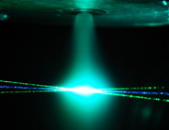
|

|
|
Laser Optogenenics & Neuroscience
|
Structured Laser/ Line Laser for PIV
|
Confocal Laser Scanning Microscop
|
|
CNI offers many lasers for Optogenetics and Neuroscience with free space or pigtailed versions. The accessories are also available for a complete solution
|
By a transient, multi-point, non-contact hydrodynamic speed method, PIV is widely used in particle flow studies, wind tunnel flow measurements, etc.
|
CLSM consists of confocal microscopy, laser and data acquisition system. CNI offers many lasers of free space and Multi-wavelengths SM fiber couplings.
|

|

|
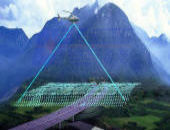
|
|
Holography
|
Communication and Imaging
|
Lidar
|
|
CNI provides coherent length >50m, high stability SLM lasers, it is widely used in holographic microscopy, holography security, holographic interferometry, etc.
|
High communication quality, small loss and long distance transmission, strong confidentiality and light structure. Mainly used for communication system.
|
Lidar is a system consists of laser, telescope collection device and signal analyzing device with high accuracy and high spatial resolution remote sensing.
|
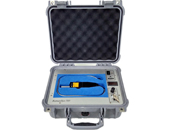
|
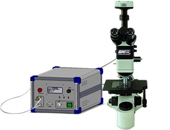
|
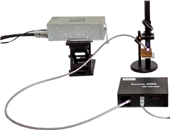
|
|
Raman Spectrum Solution
|
LIF: Laser Induced Fluorescence
|
LIBS: Laser Induced Breakdown
|
|
It shows spectrum for the
materials characteristic identification.
Used for Jewelry appraisal, forensic appraisal, and others materials.
|
The most senior detection technology, LIF is widely used in biology, chemistry, environmental sciences, agriculture, and other applications.
|
Long-distance, real-time measurement system. Small size, and quick response, no damage, versatility and variety for the samples, is used in hash conditions.
|

|
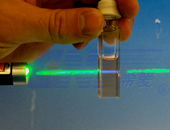
|

|
|
Laser for Medical Treatment
|
Up-conversion Luminescence
|
Laser Processing
|
|
Lasers can be widely used in clinical disciplines, CNI provides 532 nm, 561 nm, 589 nm, 1064 nm... for medical treatment.
|
CNI provides 808 nm, 980 nm, 1532 nm and other wavelengths laser sources for Up-conversion Luminescence.
|
CNI Q-switched DPSS lasers and high power water-cooled lasers are widely used in Laser Marking , welding, drilling, cutting, cleaning, etc.
|

|
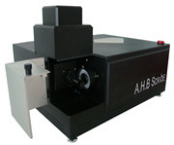
|
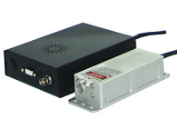
|
|
Laser Show
|
Diamond Micro Marking Machine
|
Microlaser for Diamond Planning
|
|
CNI offers high reliable green, blue, red
lasers, and RG & RGB lasers for laser entertainment. These lasers are compact and specially designe for laser show.
|
CNI offers total solution for diamond planning, with minimum character height 40um and marking width 5um.
|
CNI offers DPSS 1064nm passively Q-switched microlaser source for diamond planning.
|
Laser Application,1064nm Laser Pointer,Q Switched Laser,Blue Wavelength Laser
Changchun New Industries Optoelectronics Technology Co., Ltd. , https://www.lasersciences.com














